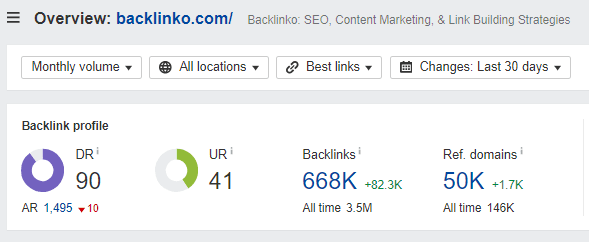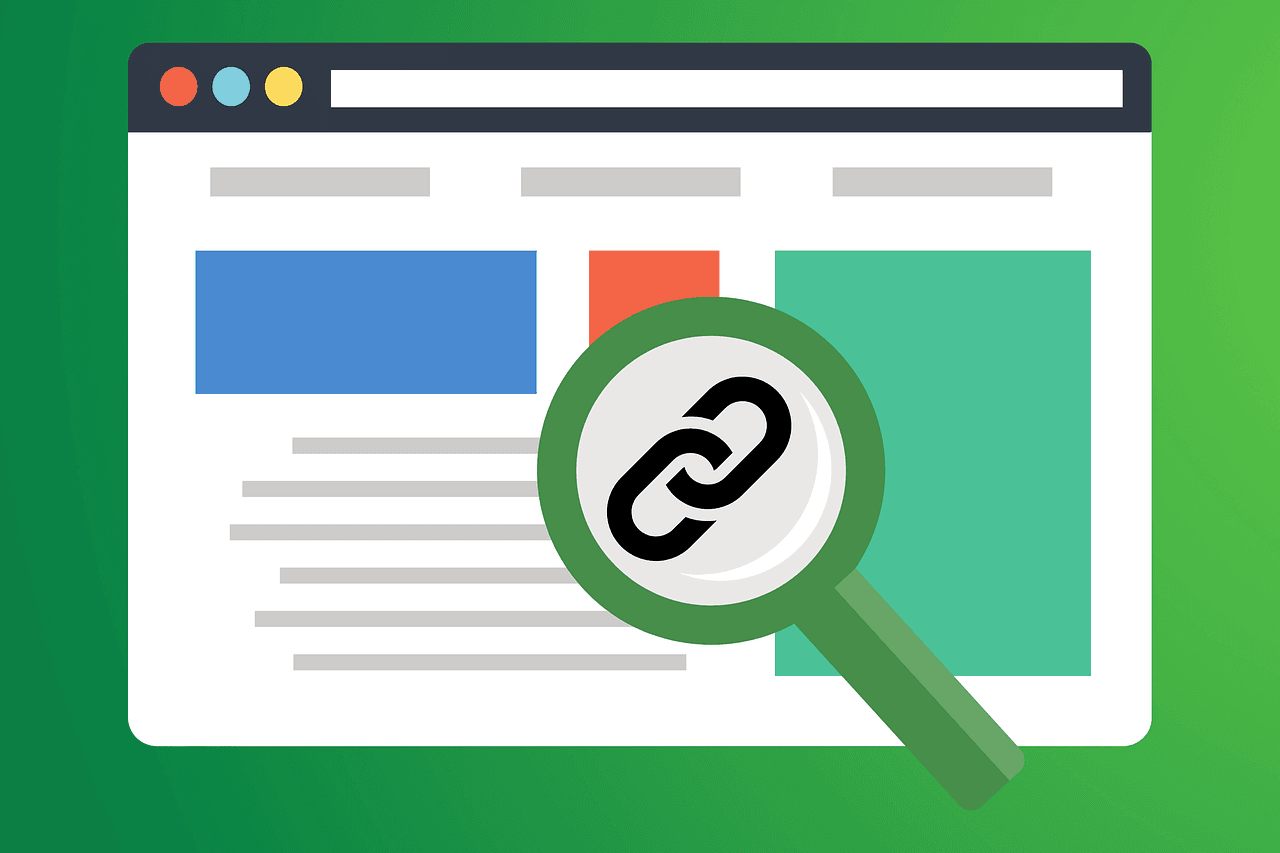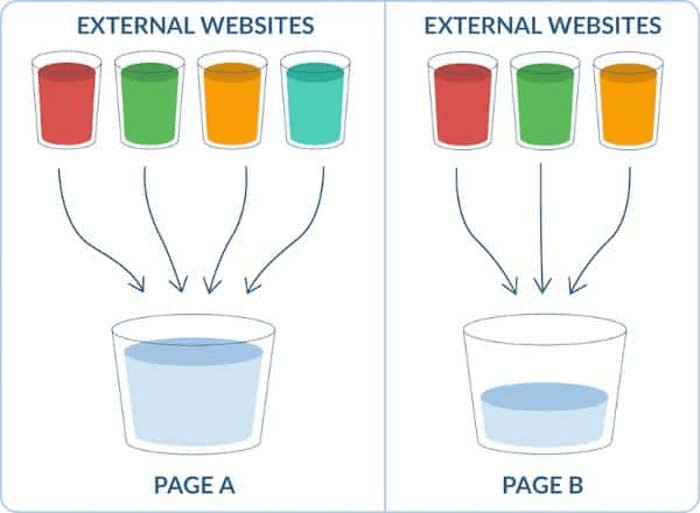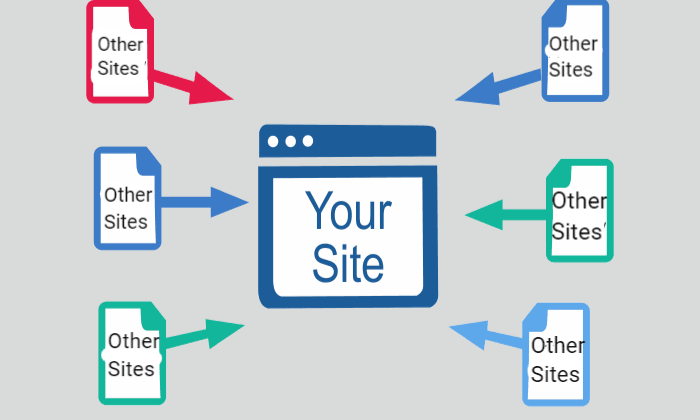A backlink profile is essential to SEO success, representing all the links from external websites pointing to your site. It influences rankings, traffic, and domain authority. At Keyword Metrics, we’ll take a closer look at this and help you understand its significance.
What is a Backlink Profile?
A backlink profile refers to the collection of all the links from other websites pointing to your site. It’s a snapshot of the quality, quantity, and relevance of these backlinks, which are crucial for determining how search engines rank your website in search results. A strong backlink profile signals authority and trustworthiness to search engines, making it an essential part of search engine optimization (SEO).

How Backlink Profile Impacts SEO
Your backlink profile is like a report card for your website’s online relationships. Search engines, especially Google, analyze this profile to understand how credible and relevant your site is in its niche. Here’s how it works:
- Backlink Quantity: The total number of backlinks your site has. While more links can be helpful, quality matters more than sheer numbers.
- Backlink Quality: Links from authoritative and trustworthy sites (like news outlets or respected blogs) carry more weight.
- Diversity: A mix of backlinks from various domains (blogs, forums, directories, etc.) makes your profile more natural.
- Anchor Text: The clickable text in a hyperlink. A healthy backlink profile has a variety of anchor texts, including branded, generic, and keyword-rich ones.
- Relevance: Links from websites related to your niche are more valuable than unrelated ones.
Example
If you run a fitness blog, a backlink from a reputable health website is far more impactful than one from a generic online directory.
Importance of Backlink Profile in SEO
Your backlink profile plays a significant role in determining your website's:
- Search Rankings: Sites with high-quality backlinks often rank higher on search engine results pages (SERPs).
- Domain Authority: Strong backlinks improve your domain authority, signaling to search engines that your site is trustworthy.
- Traffic: Good backlinks can also drive referral traffic directly to your site.
- Reputation: Links from credible sites establish your brand as an authority in your industry.
Industry Example
Consider two travel blogs: Blog A and Blog B. Blog A has backlinks from National Geographic and Lonely Planet, while Blog B has links from small, unknown websites. Blog A is more likely to rank higher because of its stronger backlink profile.
Pro Tips for Using Backlink Profile Effectively
Want to make the most of your backlink profile? Here are actionable tips:
- Focus on Quality Over Quantity: Avoid spammy or low-quality links that can harm your SEO. Aim for links from reputable sources.
- Use Link-Building Strategies:
- Guest Blogging: Write for respected blogs in your niche and include a link back to your site.
- Broken Link Building: Find broken links on other websites and suggest your content as a replacement.
- Skyscraper Technique: Create high-value content that others want to link to.
- Monitor Your Backlink Profile: Use tools like Google Search Console, Ahrefs, or Moz to regularly check your backlinks for quality and relevance.
- Disavow Harmful Links: If you have toxic backlinks (e.g., from spammy sites), use Google’s Disavow Tool to prevent them from hurting your rankings.
- Build Relationships: Network with other site owners and influencers in your niche to earn natural, high-quality backlinks.
Tools for Managing and Improving Your Backlink Profile
Managing your backlink profile effectively requires the right tools to analyze, monitor, and optimize your links. Here are some popular tools to help:
1. Google Search Console
- What It Does: Provides a free and straightforward way to view your site's backlinks, identify linking domains, and spot potential issues.
- Best For: Beginners or those looking for basic backlink insights.
- How to Use:
- Navigate to the "Links" section to see your top linking sites and anchor text.
- Monitor changes in your backlink profile over time.
2. Ahrefs
- What It Does: Offers an in-depth backlink analysis, including link quality, domain authority, and lost or broken links.
- Best For: Advanced users and professionals needing detailed data.
- Features to Explore:
- The Backlink Checker to assess link quality.
- The Content Explorer to find link-building opportunities.
3. SEMrush
- What It Does: Tracks backlinks, helps identify toxic links, and compares your profile with competitors.
- Best For: Competitor analysis and link management.
- Unique Feature: The Backlink Audit Tool that scores your backlink health and helps disavow harmful links.
4. Moz
- What It Does: Focuses on link metrics like domain authority and spam score while offering link-building insights.
- Best For: Agencies and users looking for a balance of simplicity and depth.
- How to Use:
- Use the Link Explorer to check link quality.
- Identify opportunities to build new backlinks.
How to Evaluate Your Backlink Profile
To maintain a strong SEO strategy, regularly evaluating your backlink profile is essential. Here’s how you can assess it effectively:
1. Use SEO Tools
Leverage tools like Ahrefs, SEMrush, or Moz to analyze your backlink profile. These tools provide detailed insights into:
- The number of backlinks.
- The authority of linking domains.
- The types of anchor text used.
2. Look for Red Flags
Identify and address potential issues, such as:
- Toxic Backlinks: Links from spammy or irrelevant websites.
- Over-Optimized Anchor Text: Too many keyword-rich anchors can signal manipulation.
3. Assess Link Diversity
A natural backlink profile includes:
- A mix of follow and no-follow links.
- Links from a variety of domains (blogs, news sites, forums, etc.).
- Different anchor text variations (branded, generic, and descriptive).
4. Benchmark Against Competitors
Compare your backlink profile to your competitors. Are they earning links from sites you’re not? Understanding their strategies can help you uncover new opportunities.
5. Track Progress Over Time
Keep a record of changes in your backlink profile to measure the impact of your link-building efforts.
FAQs About Backlink Profile
Q. What is a toxic backlink?
A. A toxic backlink is a link from a low-quality or spammy website that can harm your SEO rankings.
Q. How often should I check my backlink profile?
A. Regularly—at least once a month—to monitor for changes and remove harmful links.
Q. Can I rank without a strong backlink profile?
A. While it's possible, a strong backlink profile makes it significantly easier to rank in competitive niches.
Related Glossary Terms to Explore
- Backlinks: Links from other websites to yours, forming the backbone of your backlink profile.
- Domain Authority: A metric that predicts how well a website will rank in SERPs based on its backlink profile and other factors.
- Anchor Text: The clickable text in a hyperlink, an important element in backlink analysis.


